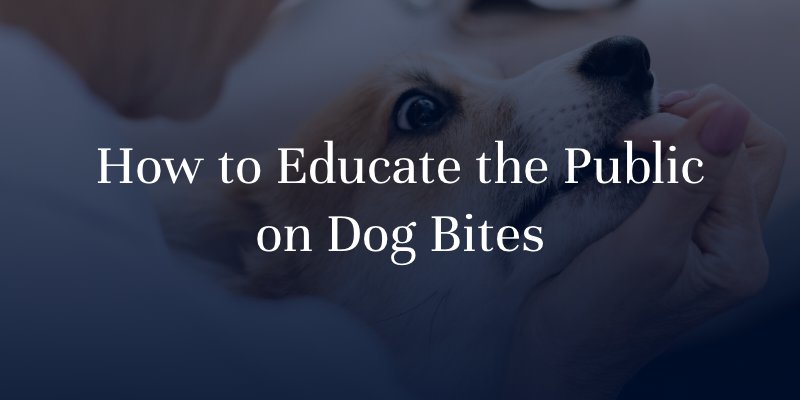
Dog bites are a common occurrence that can have serious consequences for both the victim and the dog. While some dog bites may be minor, others can result in severe injuries and even death.
Education is critical in preventing dog bites, which can cause severe injuries and even death. Whether you are a dog owner, a parent, or a member of the community, it is essential to understand how to interact with dogs safely and recognize warning signs that may indicate a dog is about to bite.
Address Children and Their Parents
When it comes to dog bites, young children are at the highest risk. According to the American Veterinary Medical Association, more than 4.5 million people are bitten by dogs each year in the United States and at least half of those victims are children.
Compared to adults, children are most likely to suffer severe injuries or die from dog bites. Most of these incidents occur during everyday activities and when the child is interacting with a dog he or she knows.
Parents play a significant role in teaching their children about dog safety and should educate their children on how to interact with these animals. Children should be taught not to approach unfamiliar dogs, to ask permission from the owner before petting a dog, and to avoid disturbing a dog that is sleeping, eating, or caring for puppies. Parents can also encourage their children to be gentle and respectful when interacting with dogs.
Explain Common Warning Signs
Dogs may display several warning signs that indicate their uneasiness, which could potentially lead to a bite. The public should know how to recognize and avoid dogs that are exhibiting such behavior.
Below are some common signs to watch out for:
- Raising or licking its lips: This could be a sign that the dog is agitated or feeling uneasy.
- Growling, showing teeth, or snapping: These are clear indications that the dog is feeling threatened and may be about to bite.
- High, slowly wagging tail: Contrary to popular belief, a wagging tail doesn’t always mean a happy dog. If the dog’s tail is held high and wagging slowly while the body remains rigid, it could be a sign of tension or unease.
- Stiff body and raised tail: A dog’s body becomes stiff when it feels threatened. The ears are perked, and the tail is raised and almost frozen.
- Raised fur: Raised fur on the neck or back could be a warning sign that the dog is feeling uneasy and may bite.
- Whites of the eyes: In normal situations, a dog’s eyes do not show the whites. However, when feeling threatened, the whites may be visible, and the dog may maintain direct eye contact.
Explain What to Do After Being Attacked
Finally, the public should know the steps that they should take if they are attacked by a dog. In these situations, seek medical attention right away; even minor bites can lead to serious infections and other health problems. Report the incident to animal control or police and provide information about the dog and owner.
Additionally, it’s essential to contact a Washington dog bite lawyer to discuss legal options and pursue compensation for any damages related to the attack. As soon as possible following the attack, contact an attorney to discuss your next steps and identify your optimal path to recovery.
